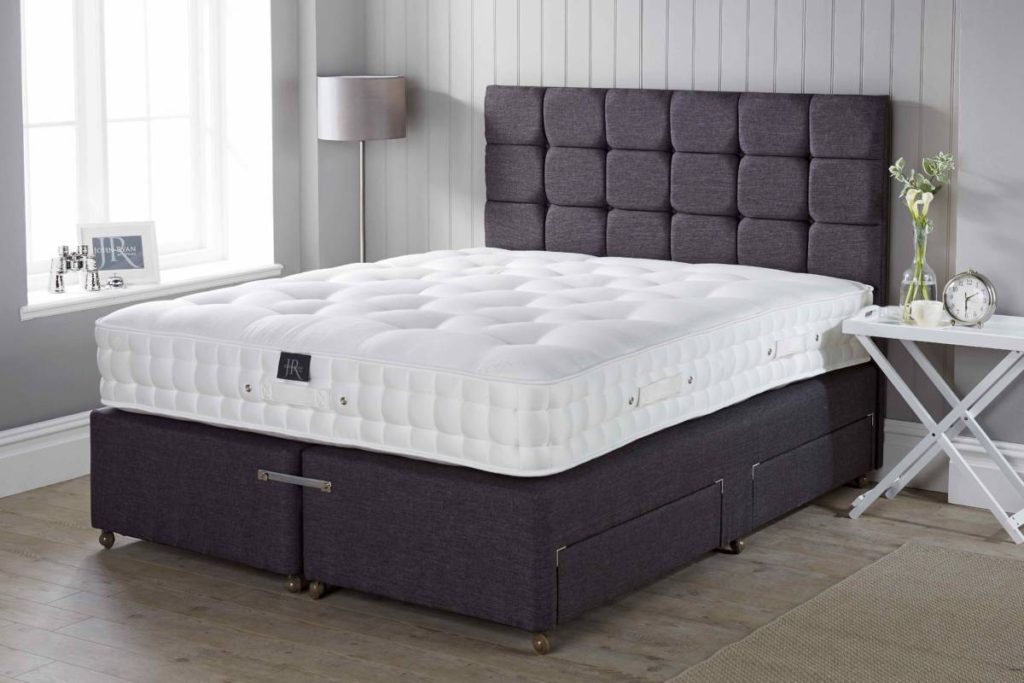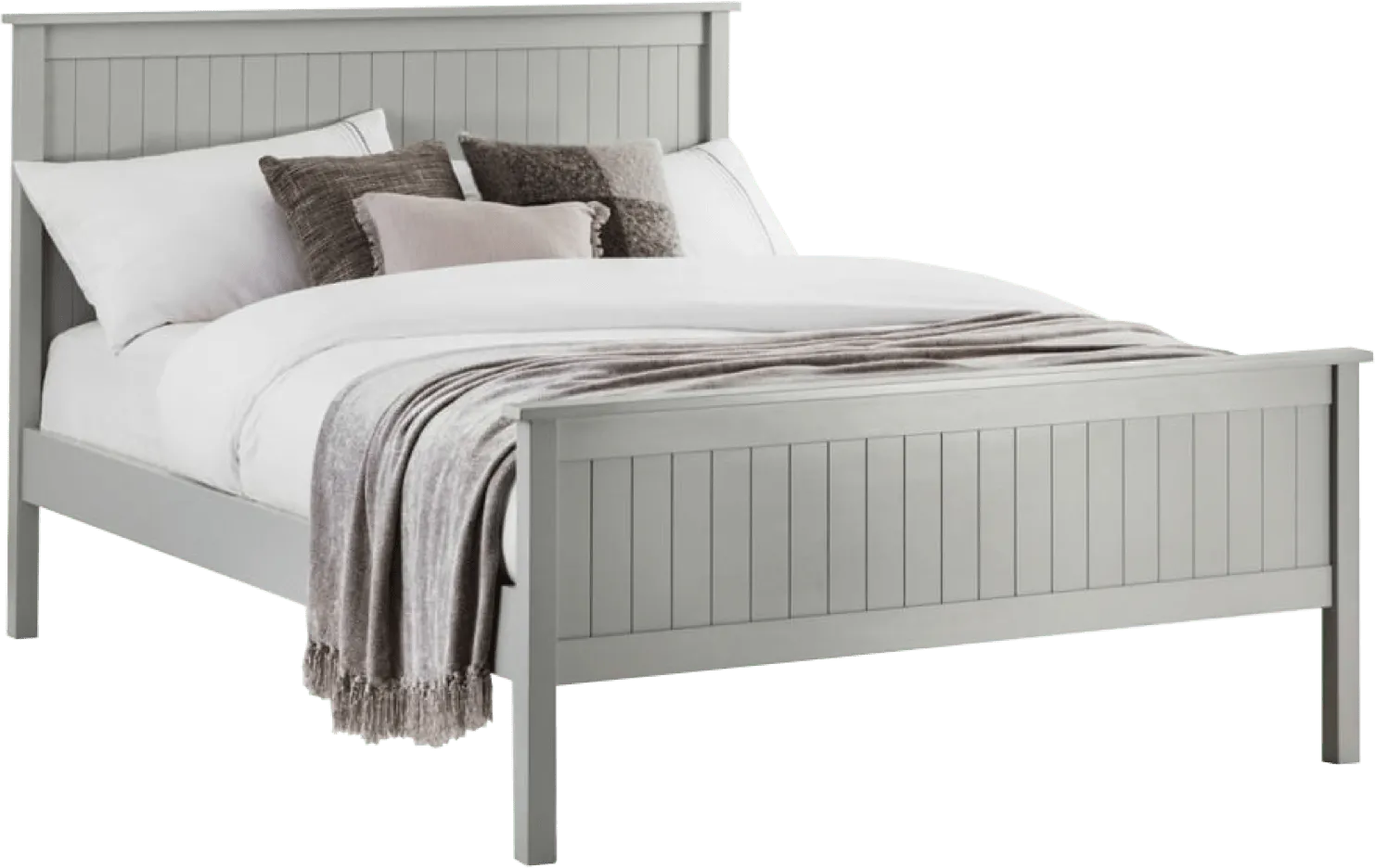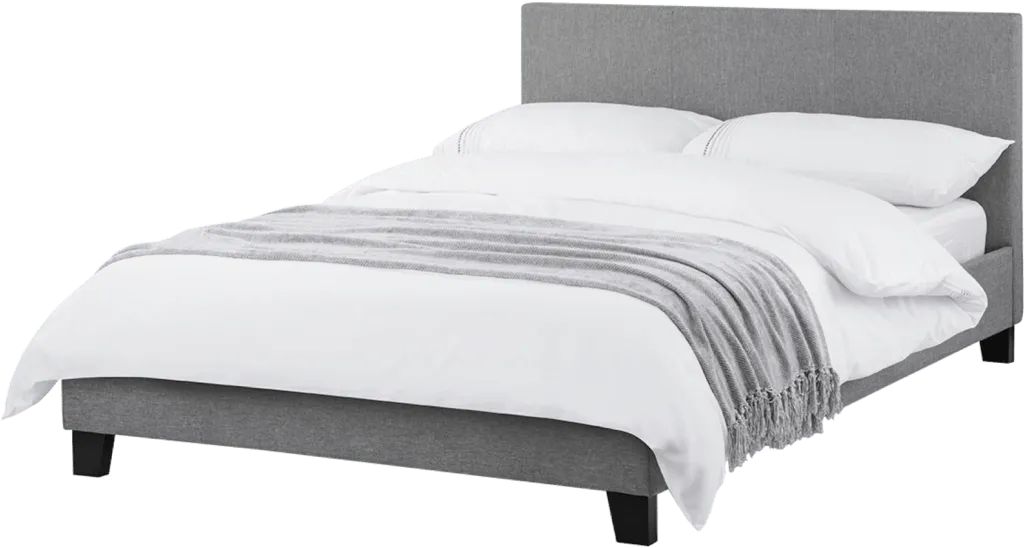3 things you need to know about mattress fillings
You don’t buy a mattress very often, on average every 7 years, so it can be hard to get your head around all the bed fillings available. Retailers know this and so there’s an ever-changing line up of fillings that are released each year. Meaning your search for a high-quality suitable mattress can become incredibly difficult. That is unless you know the 3 things you really must know before you go mattress shopping.

We’re going to explain exactly what to look out for to stop you making an expensive and unsuitable mattress purchase. Allowing you to cut through the marketing spin and see exactly what’s in any mattress allowing you to compare them quickly. It will save you both time and money, not to mention make your bed shopping much more successful!
1. Knowing the mattress fillings GSM
The first thing you’re going to need to know is the Grams per Square Meter of whatever mattress fillings are contained within the bed you’re looking at buying. This GSM will indicate how much fibre each mattress will contain which is essential to work out whether the mattress you’re looking at online is going to last and provide you with the comfort layers you require. This GSM figure tells you the weight of an upholstery layer. Let’s take polyester for example as this is the most commonly used mattress upholstery layer in retail models. If a mattress states it contains ‘White Fibre’ or ‘Polyester’ (which are confusingly the same thing) but doesn’t give you the GSM you have no idea whether its 100GSM or1200GSM, the difference is significant!
A 1200GSM mattress filling will provide a thick comfort layer with more loft (height/bounce) to the layer. A 200GSM layer of polyester will be wafer-thin and hardly provide any benefit on its own. The thinner the layer the less loft and comfort it will provide. Thinner layers also won’t last as long as they compress and settle far quicker.

The aim with GSM is to try and get the highest GSM for your budget, meaning your mattress is packed full of fillings that will add comfort and last far longer than thinner layers. Entry-level mattresses under £1,000 will be predominantly filled with synthetic mattress fillings whereas over £1,000 you should start to expect Natural Fibres in any mattress choice (more on those further on).
Knowing what’s inside your mattress applies to Memory and Hybrid foam beds too like Casper, Eve, Simba and Leesa. The difference with these memory foams is that you need to know the depth of the foam layers, not the GSM. By finding out the depth you will be able to compare what you’re getting for your money. For example, a 2cm Memory foam layer will pretty much compress straight away to nothing, whereas a 5cm or 7cm layer will offer far more comfort. Better still is 2 or 3 layers of 7cm foam on top of each other. Synthetic foam’s don’t last as long as Natural Fibres or Latex which means you really need to make sure you’ve got adequate depths of foam to get the most out of your memory foam or boxed mattress.
2. Are they Natural or Synthetic fibres?
Once you’ve worked out how much fibre is in a mattress the next step is to find out whether they are Synthetic or Natural Fibres. This is because knowing this will help you see whether the price being asked for that mattress is worth it or not. It will also give you an idea of how the mattress will feel and the quality you’re looking at. Synthetic fibres are far cheaper than natural fibres but often mattress brands and retailers will try to charge higher prices for synthetic fibres by hiding what’s in them!
Synthetic Fibres: These are man-made fibres such as polyester, white fibre, Solotex, Memory foam etc. They are cheaper than natural fibres so are used in entry-level models. They retain far more heat than natural fibres and have a shorter shelflife as they compress more. If you’re a warm sleeper you may want to avoid them or if you want to avoid using plastics in your mattress.
Natural Fibres: These are either animal or plant fibres such as Wool, Bamboo, Cashmere, Alpaca, Coir (Coconut), Hemp or Latex. They are far more responsive than synthetic fibres, high wicking, breathable and will outperform synthetic fibres in nearly every area. They do cost more but if you’re a warm sleeper then they are great at keeping you cool at night.

If you see the term ‘contains wool’ or ‘contains natural fibre’ you need to ask how much and what the percentage is. Did you know some mattress fillings claiming to ‘contain’ natural fibre can have as little as 1% natural fibre blended with polyester?
3. Blended fibre fillings
The final detail you need to be aware of is blended fibres which are more recently being used to try and squeeze in as many fibre types as possible. This is not always a benefit to you though, just to the marketing team who can claim a list of fillings that in reality are blended together. Blending fibres is useful to help softer fibres like Wool or Bamboo keep their height. Sometimes Cotton will be blended with these fibres or Horsehair to help the softer fibres keep their height. We only ever blend 2 fibres at a time 50/50. Meaning you keep the benefits of the natural fibre as much as possible without diluting it.
Descriptions of a mattress filling layers such as Horsetail, Alpaca, Egyptian Cotton, Silk and Cashmere indicates its a blended pad. With an unknown percentage of each fibre mixed together. Usually, the cheaper fibre is the majority of even polyester may be used to blend them together. This is why knowing the GSM and the exact filling type is essential.
How much to spend on mattress fibres?
If you’re wondering how expensive different fibres are there’s a handy guide below to let you see exactly what you should expect for your money. Knowing this will help you work out whether that amazing deal mattress you’ve found is actually a really expensive fake!
| How much to spend on a double mattress? | What can I expect for my money? |
|---|---|
| Under £500 | Will not get you much at best a 13.5 gauge open coil/cage sprung with a thin polyester layer or a solid foam mattress. |
| £500 | Entry level spunbond springs with some form of synthetic upholstery. Usually one sided mattresses. |
| £750 | The beginnings of a basic pocket springs unit with 800 – 1000 count. No substantial amount of filling other than foams and synthetic materials. Two sided models. |
| £1000 | Should get you away from most low ranges and into the mid-range pocket spring models. |
| £1250 | Should get you a decent pocket sprung mattress with some Natural Fibre content. |
| £1500 | Should get you many manufacturers mid-range models with Natural Fibres |
| £1500-£2000 | Should get you a Hand Made primarily Natural Fibre Quality Mattress |
| £2000+ | You should expect 100% Natural Fibres and Traditional Hand Made Construction Method. |
| £5000+ | A Bespoke Hand Made Sleep System, High-end Spring Units & Featuring the Worlds Most Luxurious Natural Fibres. |

| Upholstery Layer | Fibre Type | How it will feel? | Price Point |
|---|---|---|---|
| Polyester | Synthetic | Soft | Cheap |
| White Fibre | Synthetic | Soft/Medium | Cheap |
| Recycled Fibre / Eco Fibre | Synthetic | Medium | Cheap |
| Memory Foam | Synthetic | Medium/Firm | Mid Price |
| Igel / Hybrid Foam | Synthetic | Medium/Firm | Mid Price |
| Polycotton | Synthetic/Natural Blend | Soft/Medium | Mid Price |
| Linen | Synthetic/Natural Blend | Medium | Mid Price |
| Wool (Pure) | Natural | Soft/Medium | High-End |
| Cotton (Pure) | Natural | Soft | High-End |
| Silk | Natural | Soft | Expensive |
| Horsehair | Natural | Medium | High-End |
| Mohair | Natural | Medium/Firm | High-End |
| Hemp | Natural | Medium | High-End |
| Latex (100% Natural) | Natural | Medium/Firm | High-End |
| Coir | Natural | Firm | High-End |
| Flax | Natural | Firm | High-End |
| Coarse Cashmere | Natural | Firm | High-End |
| Bamboo | Natural | Super Soft | Expensive / Exclusive |
| Horsetail | Natural | Firm | Expensive / Exclusive |
| Alpaca | Natural | Soft | Expensive / Exclusive |
| Cashmere (Pure) | Natural | Soft | Expensive / Exclusive |
| Vicuna | Natural | Super Soft | Expensive / Exclusive |
By finding out the 3 things you need to know about mattress fillings you can be better prepared when buying a new bed. Without knowing these 3 things you really are just guessing.
Firstly find out the GSM of the fibres contained within the mattress and if a retailer can’t tell you – walk away.
Secondly, identify which layers are synthetic and which are natural fibre. This will enable you to see the quality of the mattress fillings.
Lastly, inquire about potential blended fibres to see if they are mixing them together to save cost. A pure fibre is far better than a blended fibre in most cases.
If you need mattress help with buying a mattress why not ask our team for a recommendation on the models you’ve found? Call our small expert team on 0161 437 4419 or drop us a message below.


Ask us a question.
There are over 6000 questions and answers submitted by you on all questions about mattresses and bed problems. Enter a keyword such as Vi Spring, John Lewis beds, bad back or Memory Foam and see if your question has already been answered.
You can filter popular questions by the categories below. If you can’t find an answer, ask a new question below. We aim to respond to all questions within one working day.




































 Mattresses
Mattresses  Take our mattress quiz
Take our mattress quiz  Contact
Contact  About us
About us 



